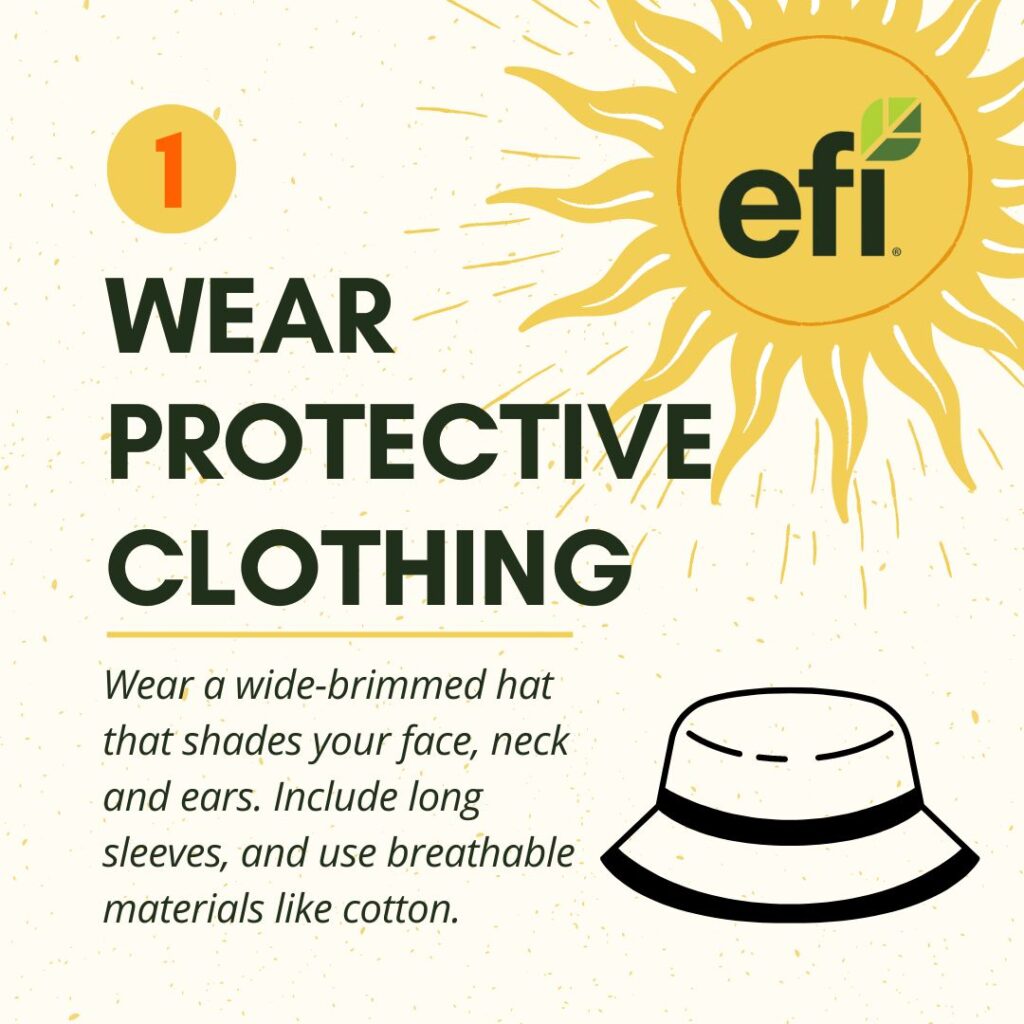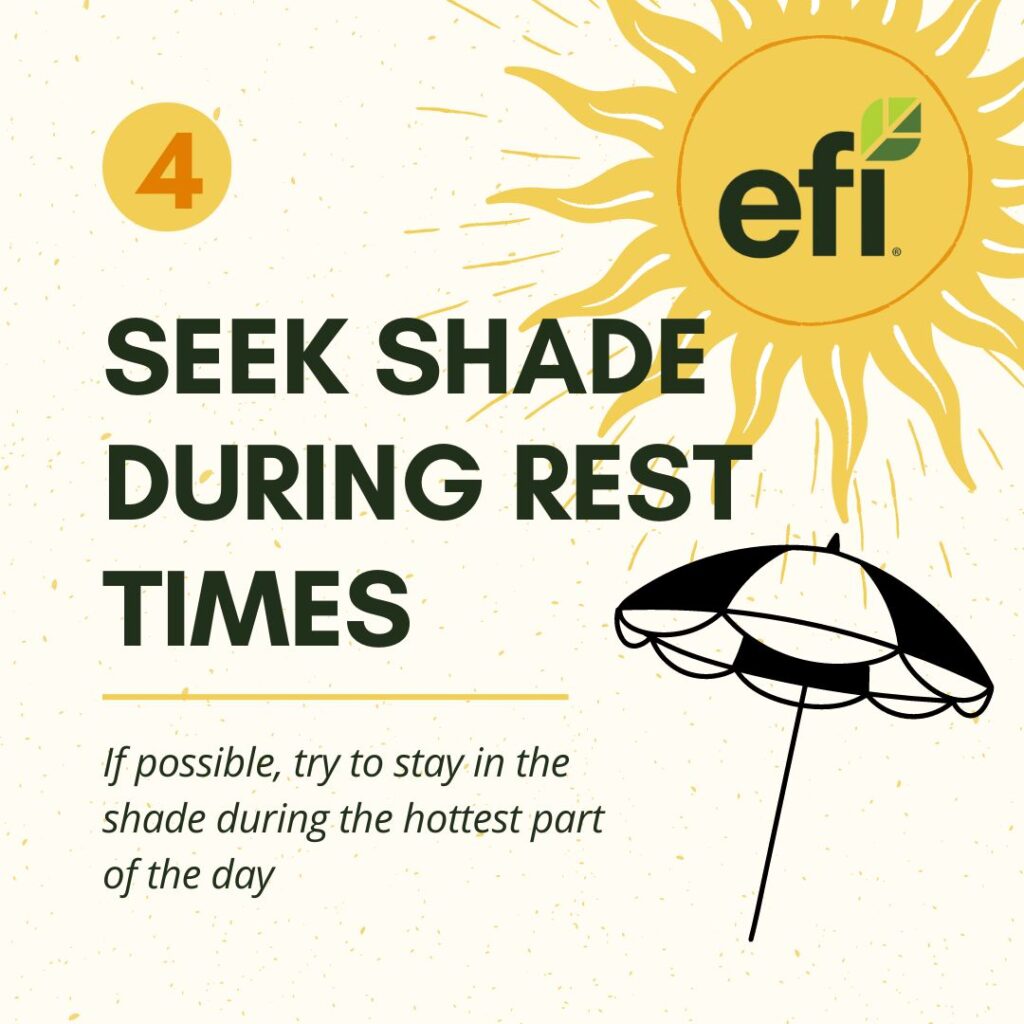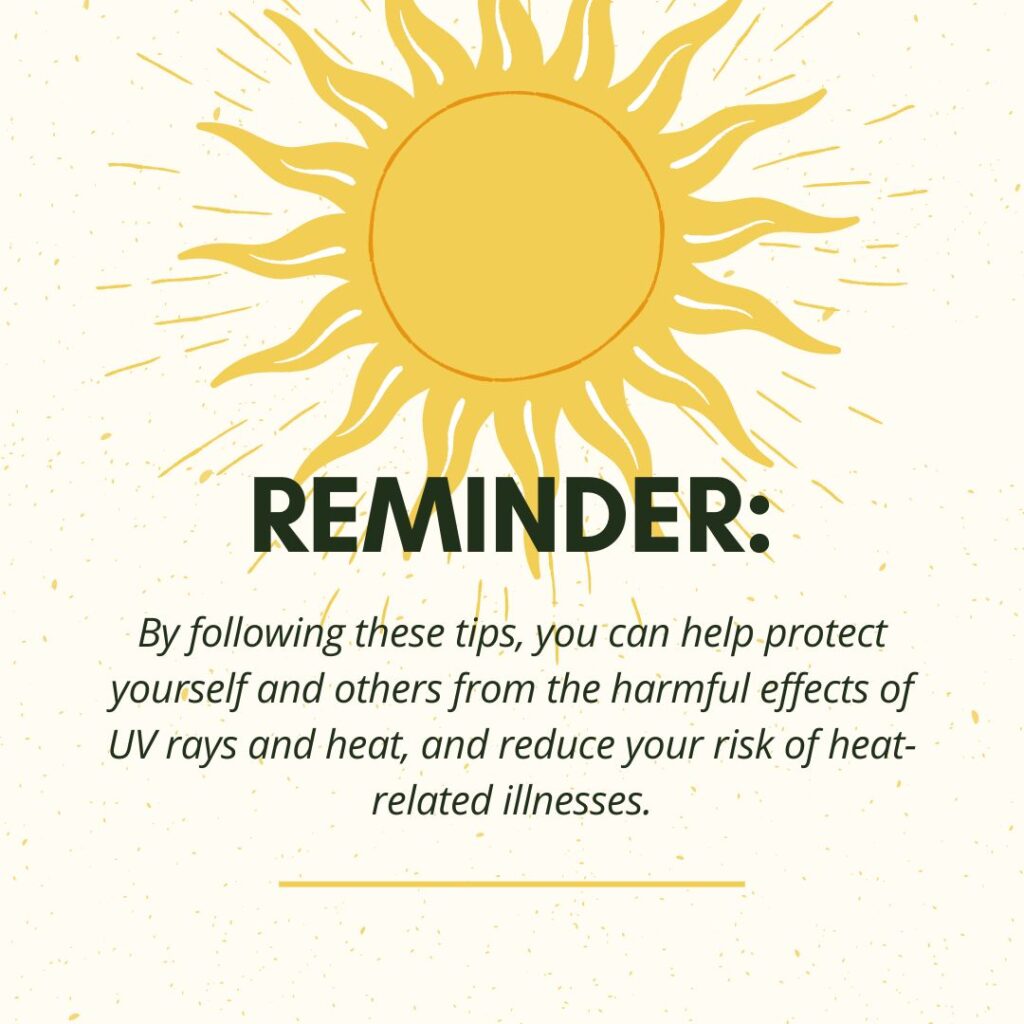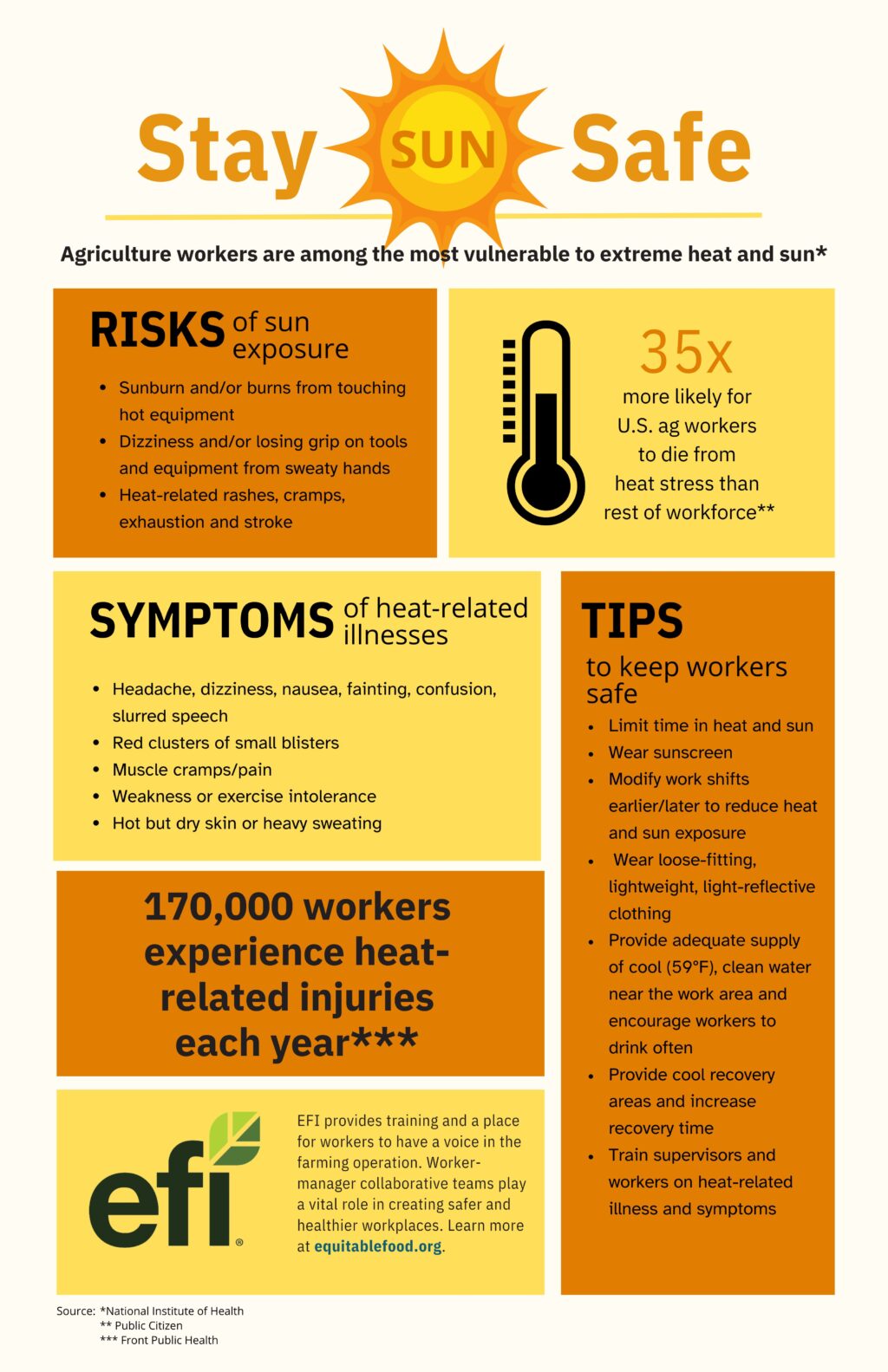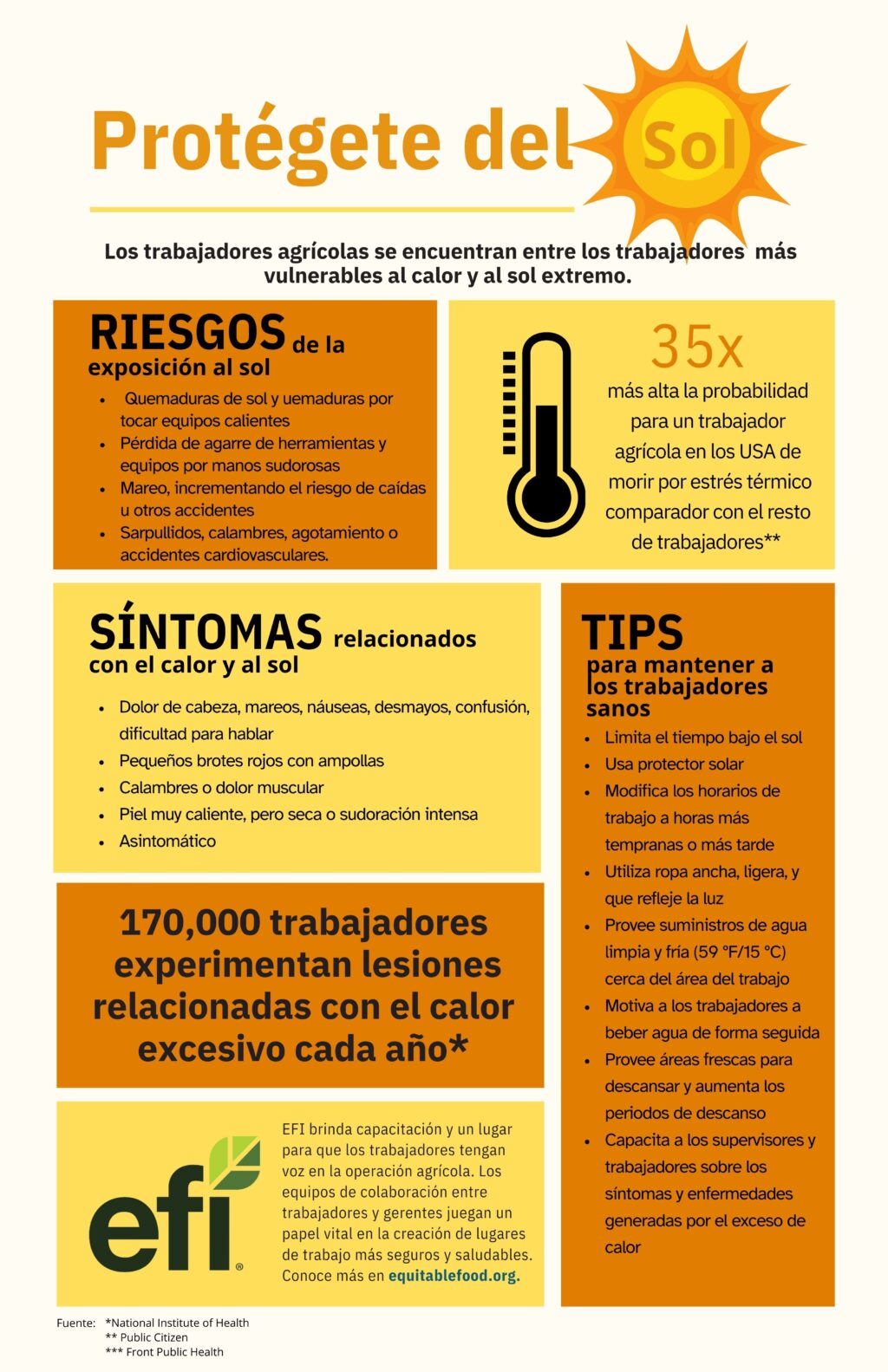Sun & Heat Protection
How to Protect Yourself and Your Colleagues from the Sun and the Heat
Farmworkers are essential for putting food on our tables every day of the year. While working in the fields is already challenging labor when seasons change and the heat increases across the country, agricultural workers are at major risk of heat stress.
On an average day, temperatures in the fields can be 8-10 degrees Fahrenheit hotter than the reported daily high from the National Weather Service¹. During peak production seasons in July and August, farmworkers often spend 12 hours or more in temperatures that frequently exceed 100 degrees Fahrenheit. This extreme heat, coupled with the lack of shaded areas and clean drinking water, makes it difficult for farmworkers to take preventive measures to protect themselves from heat stress.
Heat exposure contributes to up to 2,000 worker fatalities in the U.S. each year. Additionally, up to 170,000 workers in the U.S. suffer heat stress-related injuries annually, with workplace injuries increasing by 1% for every 1° Celsius rise in temperature². Failure to implement simple heat safety measures also has a significant economic impact, costing the U.S. economy nearly $100 billion annually.
External resources
Protect Yourself from Heat Stress – Heat Stress Prevention Training by the Association of Farmworker Opportunity Programs (EN and ES)
Water, Rest, Shade – Pocket Size Brochure by the Association of Farmworker Opportunity Programs (EN and ES)
Train the Trainer – HEAT Toolkit (EN) by University of Washington
Entrenando al Entrenador – HEAT Toolkit (ES) by University of Washington
Heat Illness Toolkit (EN & ES) by University of Washington
The Quest to Protect Farmworkers from Extreme Heat (EN) by MIT Technology Report
We believe it’s critical to look after the mental and spiritual health of our employees as much as their physical well- being”
Vernon Peterson, owner of Abundant Harvest Organics.
The Environmental Protection Agency (EPA) reports that Workers’ Compensation claims for heat-related illnesses among farmworkers are the highest of any occupation. Mortality risk is 20 times higher for crop workers in the U.S. than private industry and non-federal government workers³. After the summer of 2023, with its record-breaking heat and devastating consequences for people, and crops, there’s an urgent need for effective heat stress prevention strategies.
In collaboration with agricultural workers, EFI has developed a comprehensive set of resources and tools aimed at supporting and promoting farmworkers’ safety during the heat season. These resources and tools are designed to enhance workplace safety and health in the agricultural industry.
Below are the main steps you can take to protect yourself from the sun and heat:
EFI remains committed to promoting safe and healthy working conditions across the agricultural sector. By adopting comprehensive sun protection and heat safety practices, employers can not only protect their workers but also enhance their reputation as employers of choice, fostering a positive and productive work environment.
Flyers for the Common Areas:
Other Ways to Support Sun Heat Protection for Farmworkers
The Celebration Nation Foundation: Donate to protect farmworkers from extreme heat. Depending on the amount, your donation will contribute to providing farmworkers with a hat, a cooler towel, and a box of fresh produce.
AFOP: As part of NFAW’s week of action, AFOP will host its annual National Long Sleeve Shirt Drive in multiple states during March. Open the link to see the nearest drop-off locations.
The Farm Link Project: For each product purchased, the partner company will donate a t-shirt/crewneck to support farming communities.
Farmworker Family: Donate to the monthly distributions, including clothing (i.e., light color t-shirts, natural fibers long sleeves, hats) and essential products (i.e., water bottles).
UFW Foundation: In-kind contributions include protective gear, personal hygiene supplies, food and clothing. The UFW foundation has several offices in the Central Valley, California. If you wish to make a donation, please call the nearest office to schedule a drop-off or email development@ufwfoundation.org with your approximate location.

